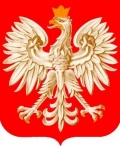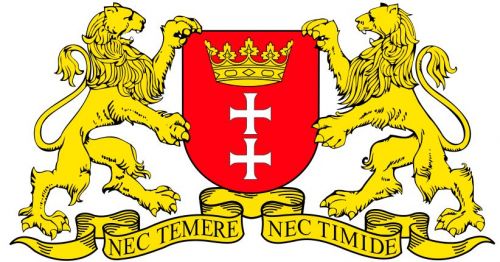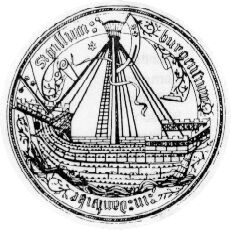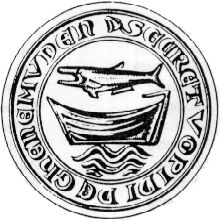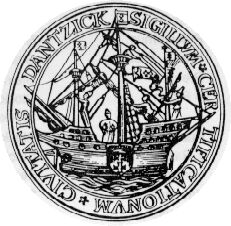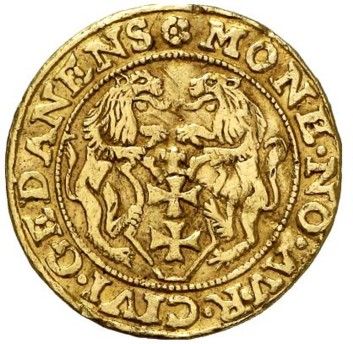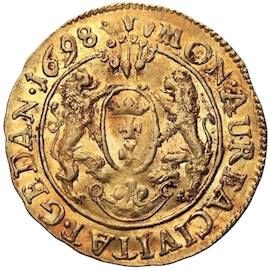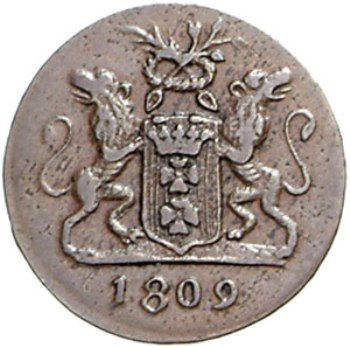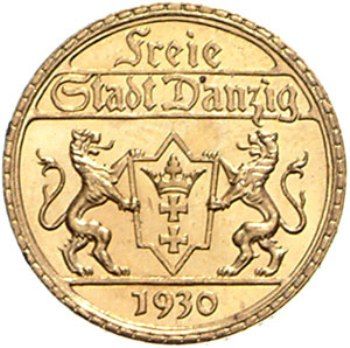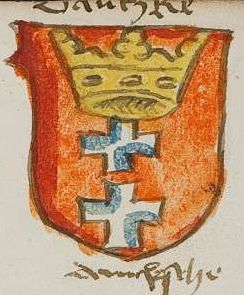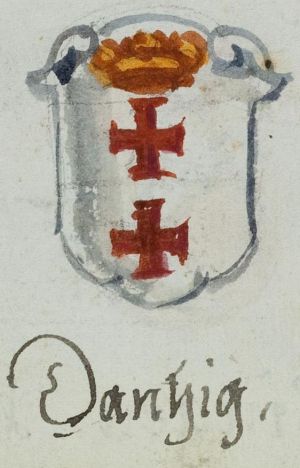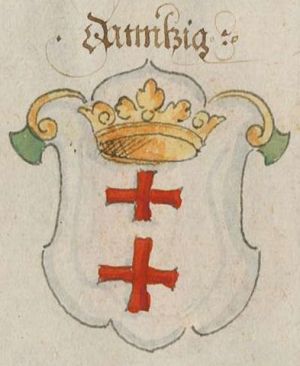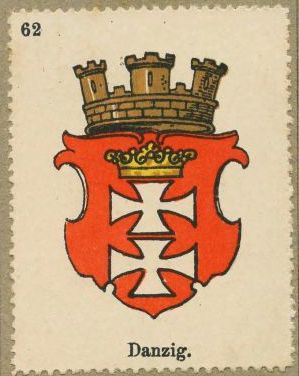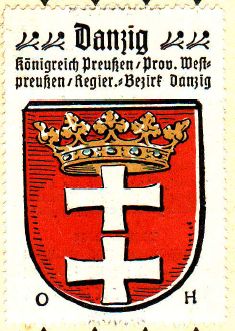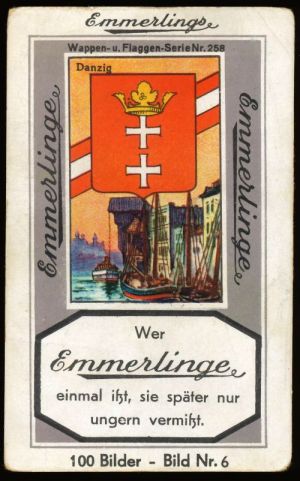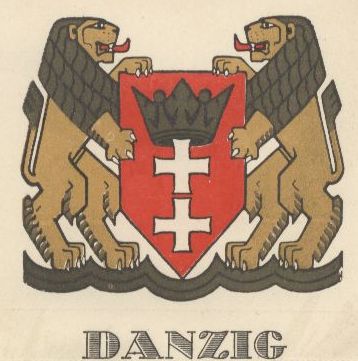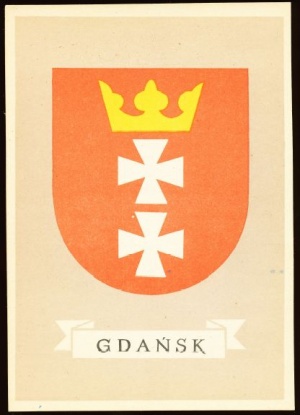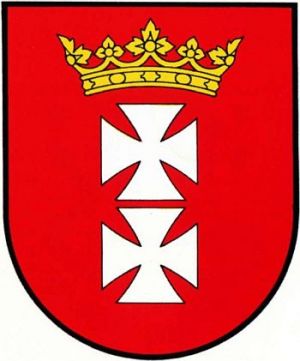Gdańsk
Poland heraldry portal
This page is part of the Poland heraldry portal |
Heraldry of the World |
|
Civic heraldry:
|
Other heraldry: |
GDAŃSK
Province: Pomorze
County: Pleszew
Official blazon
Origin/meaning
Gdansk has a complicated history. The city was founded in 997 and became a possession of the Teutonic Order in 1308. It received (German) city rights in 1343, but the oldest seal dates from the 13th century and reads civitatis, indicating that the town may have received city rights before 1308.
In 1452 the city became Polish. Later the city became Prussian. From 1807-1814 it was a separate state, but ruled by France. In 1814 the city again became Prussian. After the creation of a unified Germany, it became German. In 1919 the city and surrounding area formed an independent state (Freie Stadt Danzig), based on the former cities Danzig and Zoppot as well as the counties Danziger Höhe, Danziger Niederung and Grosses Werder. In 1939 it was occupied by German troops and incorporated into Germany.
After the second world war the state became again a part of Poland.
The oldest seal of Gdansk dates from the 13th century and only showed St. Mary. The seal read Sigillu antique civitatis Gdasz. On a seal known since 1299 the town is called Danzikh, and the seal shows a Kogge (typical ship of the Hanseatic League). Again a later seal, from the middle of the 14th century, shows St. Catherine, standing over a tyrant.
| The seal from around 1400 |
The seal from the late 16th century |
| The small seal from the middle of the 15th century showing a fish and boat. | |
| The arms on a coin from 1547 |
The arms on a coin from 1698 |
| The arms on a coin from 1809 |
The arms on a coin from 1930 |
The crosses first appear on a small seal from 1402. The crosses are not separate, but joined together. The first Polish seal, from the end of the 15th century, shows St. Bartholomeus, not the crosses. At the same time two small seals are used, which still show the ship. On one of these a small shield with the two crosses is seen. From around 1460 the crosses are present on most seals. Ever since the crosses have been part of the arms of the city.
The crown was added in 1457. Immediately the city had a new seal made with the new arms. On this, the arms were also held by two supporting lions. These, however, were not officially granted. Ever since the city and the states have used the arms with the lions as supporters. After the city became part of Prussia, the seals showed the arms with the Prussian eagle placed above it.
| The arms in a manuscript from 1514 |
The arms in a 16th century manuscript |
| The arms in a 17th century manuscript | |
| Seal from around 1900 |
The arms in the Wappen-Sammlung (+/- 1910) |
| The arms in the Continentale Verlags-Anstalt album, +/- 1910 |
The arms in the Kaffee Hag albums +/- 1915 |
| The arms in the Emmerlinge Series, +/- 1920 |
The arms in the Abadie albums |
| The arms in a 1930s album |
The arms on a 1939 postcard |
| The arms as shown in 1963 |
The arms on a 1960s postcard |
| The arms as shown in 1994 |
The arms in the town (source) |
Contact and Support
Partners:
Your logo here ?
Contact us
© since 1995, Heraldry of the World, Ralf Hartemink
Index of the site
